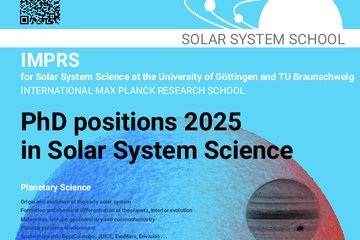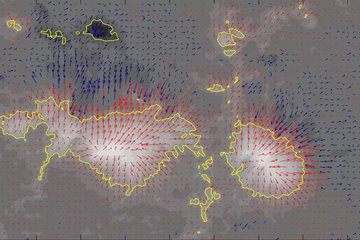Fast Solar Polarimeter
Together with the Microlens Spectrograph, GRIS+ at the GREGOR telescope, and the future Sunrise UV Spectropolarimeter and Imager (SUSI), FSP is part of the general endeavour of MPS to advance instrumentation for solar spectropolarimetry. The main goals are:
- Spatial resolution close to diffraction limit of current solar telescopes (< 100 km)
- Spatial, spectral and polarization information with cadence < solar evolution timescale
- Increased polarimetric sensitivity (order 0.01 - 0.1%)
The FSP has been developed in 2 phases:
- Phase I: proof of concept with FSP prototype based on a small pnCCD sensor (264 x 264 pixels), single-beam setup
- Phase II: full-scale, science-ready instrument, based on CMOS sensors, 1k x 1k pixels field of view, dual-beam setup

Phase II has been completed in 2016. Since then FSP has been succesfully deployed at the TRIPPEL spectrograph of the Swedish Solar Telescope and currently at a filtergraph of the Dunn Solar Telescope (DST). Future observing campaigns at the Canary Islands observatories are foreseen. Whereas both types of post-focus instrumentation lead to the same data cube consisting of 2D spatial, spectral and polarization information, the difference is in the simultaneity of the information obtained. This is important in view of the rapidly evolving solar atmosphere during the measurement. The choice of the instrumental configuration is determined by the scientific requirements of a given observing campaign.

FSP-II key technology:
- High frame-rate, low-noise, stabilized CMOS cameras
- Rapid polarization modulation (30 - 100 Hz) with ferro-electric liquid crystals to suppress errors from external disturbances
- High-performance DAQ system to cope with the large camera data rates (1-2 GB/s)
- Numerical image restoration to correct for residual optical aberrations
Science with FSP

Solar magnetic fields play a crucial role in driving solar activity, so that their investigation holds a particularly important position in solar physics. As in most branches of astrophysics, we are relying on light as main information carrier also when studying the Sun. Magnetic fields influence the polarization of light through various mechanisms, i.e. through the interaction with atomic momentum (Zeeman and Paschen-Back effect), or in the context of coherent scattering processes (Hanle effect). The range of measured polarization degree reaches from order 10-1 in sunspots to 10-4 in the case of scattering polarization. Even higher sensitivities are required to uncover the full range of turbulent magnetic fields thought to fill the entire solar photosphere.
To reliably detect such subtle signals, we have to sample relative intensity differences of the same order of magnitude. Solar polarimetry, in particular from the ground, is high-precision differential photometry under difficult observing conditions, far away from a stable lab environment. An added challenge is that high polarimetric accuracy has to be achieved together with high spatial resolution, since solar magnetic features are generally concentrated and structured on comparatively small spatial scales, requiring a spatial resolution of ideally better than 0.1”.


For ground-based solar observations, turbulence of the Earth’s atmosphere is the greatest challenge. For polarimeters on balloon or space missions jitter (e.g. due to attitude control) can pose serious problems. Simulations and measurements have shown that very small changes in the observed solar scene of about 0.05 detector pixels can induce spurious polarization signals on the 10-3 signal level. FSP is based on a fast detector which allows for modulation at frequencies well above the typical frequency range of such disturbances.
The principle of polarimetry

Polarization is a phase property of light, it is determined by the phase difference between the components of the electrical field vector. In contrast, detectors are only sensitive to intensity or photon flux. To become measurable, the polarization, i.e. the phase information of light, has to be translated to intensity information. This is done with the help of a polarization modulator. The polarization of light can be fully described with the 4 Stokes parameters I, Q, U and V, where I corresponds to the intensity, Q and U to linear polarization, and V to circular polarization.
The polarization state is encoded into a periodic intensity modulation using variable phase plates and a linear polarizer. The use of a linear polarizer in transmission only (single-beam setup, used in FSP-I) has practical advantages but reduces the efficiency as approx. 50% of the incoming signal is not measured. In a dual-beam setup (used in FSP-II) a polarizing beamsplitter splits the incoming beam into 2 orthogonally polarized images which are recorded simultaneously by 2 different detectors (or areas of a single detector). This setup is more efficient but also more challenging in terms of technical implementation. In particular an accurate relative stabilization and cross-calibration of the 2 channels is required to avoid differential effects leading to spurious polarization signals.

















